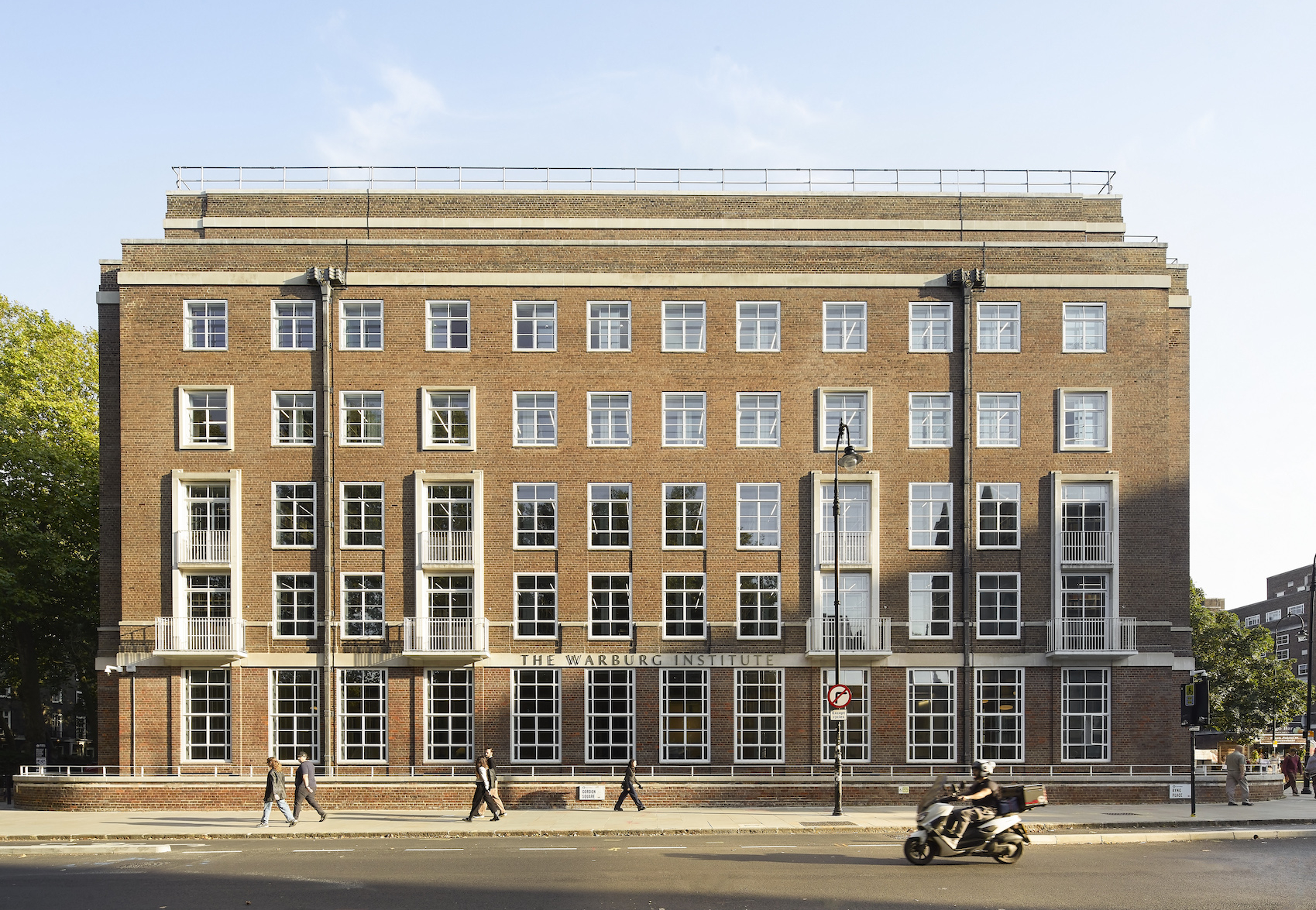Haworth Tompkins’ £14.5 million transformation of the Warburg Institute in London’s Bloomsbury includes the Institute’s first gallery, a 140-seat auditorium, and a state-of-the-art centre for special collections.
Photos
Hufton+Crow
The Warburg Institute in London, one of the world’s leading centres for the study of art and culture, has unveiled a transformational redevelopment of its Bloomsbury home to create a series of new spaces for a dynamic public programme of exhibitions and events.
The Warburg Renaissance, the £14.5 million renovation project Haworth Tompkins, includes the Institute’s first gallery, a dramatic 140-seat auditorium, and a state of the art centre for special collections. The expanded programmes will include fellowships for practitioners-in-residence and commissions for contemporary artists, writers and thinkers. It restores the Institute’s original emphasis on discovery, display and debate, and opens the doors of the Institute to new publics and partners.
The Kythera Gallery.
The new Kythera Gallery, located on the ground floor, is a public-facing cultural hub which will showcase the Institute’s holdings and connect them to international collections through a public programme of free exhibitions.
At the heart of the Institute, adjacent to the Kythera Gallery and filling the previously empty courtyard, is the Hinrich Reemtsma Auditorium, which will host public lectures, conferences, concerts and films. Lined with wooden panelling, it features a sculptural ellipse in the ceiling, based on Aby Warburg’s original design in Hamburg, and the restored Grotrian-Steinweg piano donated by former director Ernst Gombrich.
The Hinrich Reemtsma Auditorium.
On the lower ground floor, the Wohl Reading Room provides a light-filled space for the study of the Warburg’s special collections, including the Photographic Collection of 400,000 images (the world’s most extensive archive for the study of iconography), Rare Books, Manuscripts and Archives. Along with the Institute’s library, these collections document the movement of culture across barriers of time, space and discipline.
The Institute’s former Lecture Room has been converted into two new seminar rooms, collectively known as the Marie-Louise von Motesiczky Teaching Suite. The sound-proof dividing wall can be removed, creating a more intimate space for lectures and other events.
The Hinrich Reemtsma Auditorium as seen from the courtyard.
The unique Library Collection, the largest in the world focused on the afterlife of antiquity and the survival and transmission of culture, is housed over four stories preserving Aby Warburg’s original system of organisation with one floor each devoted to subjects of Image, Word, Orientation and Action. A reconfiguration to the layout of the shelving has expanded stack areas to make space for new acquisitions to the growing collection of 360,000 volumes, and it has opened up the library to natural light.
Other enhancements throughout the building incorporate the refurbishment of the reception area, in which the newly restored Coade stone frieze of the nine muses of the arts and sciences is installed to welcome visitors upon entry.
The refurbished reception area.
Elizabeth Flower, Project Architect, Haworth Tompkins, said: “The Warburg Institute is one of London’s greatest hidden treasures, hiding in plain sight within an anonymous 1950s block. Through the Warburg Renaissance project we set out to honour the legacy of both its architect Charles Holden and founder Aby Warburg, while opening its unique contents up to new audiences. Striking a balance between modernisation of the Institute’s publicly accessible aspects, alongside the preservation of its extraordinary character and atmosphere has been a forensic and important process. Its architectural re-birth will allow continued discovery and enjoyment of the collections for many future generations.”
The project has been enabled by the University of London with an investment of £9.5 million and a major gift from the Hamburg-based Hermann Reemtsma Stiftung, along with support from other national and international philanthropists, trusts and foundations.
Credits
Client
The Warburg Institute, School of Advanced Study, University of London
Architect
Haworth Tompkins
Main contractor
Quinn Heritage London
Project manager and cost consultant
Artelia
Building control
Assent
Structural engineer
Price & Myers
MEP/Services engineer
Skelly & Couch
Acoustics
Gillieron Scott Acoustic design
SKA Assessor
B Sussed
Fire Engineer
The Fire Surgery
Heritage consultant
Alan Baxter
Source: Architecture Today







